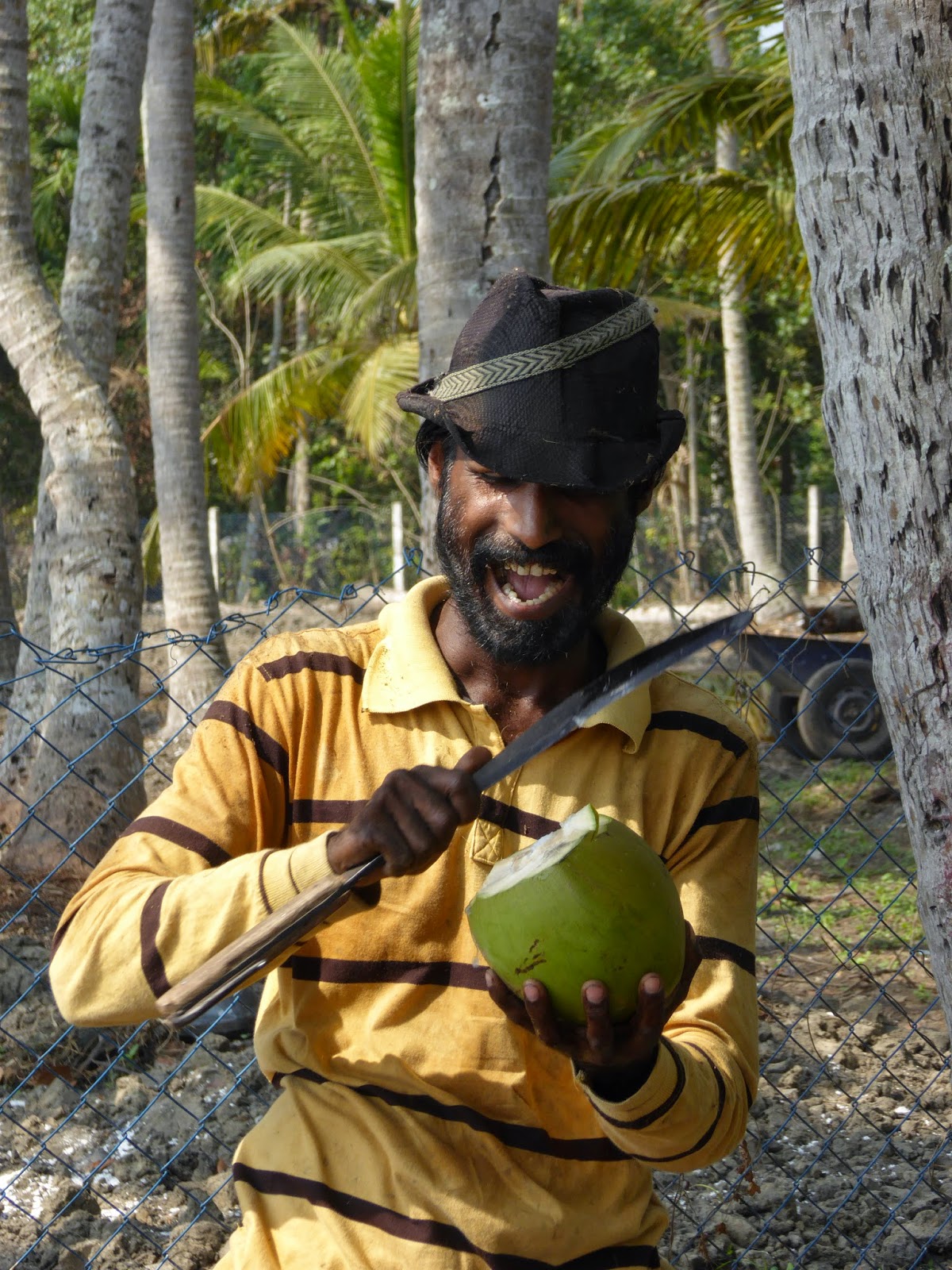Cycling in Kerala - Fifty Shades of Green
I had heard that Kerala was beautiful. Together with the amazing vegetarian food, that was one of the reasons I wanted to visit.
We asked how the pokey liquor was produced and were told that the coconut flower is sealed in clay and hit with a buffalo bone. The truth of that account may be in doubt but certainly, sipping the yeasty liquid did make me feel as though I'd been beaten around the brow with a buffalo bone.
Self sufficient, sustainable and varied, Kerala made me green with envy.
My cycling trip in Kerala was arranged through Pedal Nation, flying to Cochin with Emirates Airline
Nothing, though, prepared me for the totally breathtaking scenery, nor the astonishing variety of landscape. Turning a corner, waking on a new dawn, brought a new country within a state.
So much of Kerala is green. The lush landscapes are partly the result of the forty-two rivers which slake the sun baked earth, partly due to careful management of the land which ensures that Kerala feeds the rest of India.
 |
| Tea plantations in the mountains near Munnar |
Cycling is a wonderful way to experience Kerala in all its shades of green. We rode through rubber plantations, by banana groves and in the shade of coconut palms. We wound our way up hillsides on which clung neat rows of tea plants a century old. We rode through cardamon forests by rice fields and high above tapestries of small holdings. Some crops, like beans, onions and even cabbages, were unexpectedly familiar. Others, like the ubiquitous jack-fruit, more exotic.
 |
| Rice fields at sunset |
Kerala doesn't only bewitch with its beauty, it beguiles with intoxicating aromas stirred by the cooling breeze. Sweet vanilla, spices and coffee grounds drying on sheets outside people's homes, fish tangled in sun-bleached nets, cocoa beans crushed beneath our bicycle tyres.
Curry leaves grew in abundance: a Vesta vista.
Curry leaves grew in abundance: a Vesta vista.
'God's own country' supplies nuts and spices to the rest of the world. Large scale production is achieved through surprisingly small scale farming; cottage industries sustaining families and village communities. We saw ginger being harvested, passed by trees hung with clove flowers, pepper seeds and cashews.
Of all crops, it is the coconut which is most thoroughly exploited. Visiting the lagoon-side home of a local guide, we watched a wiry worker shimmy into coconut palms high above our heads using a set of hydraulic calipers strapped to his legs. Having cut down some fruit he hacked off the tops to offer delicious, cooling coconut water fresh from the tree.
 |
| Coconut water, straight from the tree |
Coconut made an appearance in almost every dish we ate: from the squares of sweet coconut bread at breakfast to the steamed dumplings and fragrant curries. For snacks when energy flagged there were crispy fried banana fritters, studded with chunks of moist coconut flesh. Coconut oil and milk leant richness to fragrant dishes, we even pedalled off the track one stiflingly hot afternoon to explore a 'toddy parlour' serving a local spirit distilled from the fruit.
 |
| Home produced: lunch, served on a banana leaf |
We asked how the pokey liquor was produced and were told that the coconut flower is sealed in clay and hit with a buffalo bone. The truth of that account may be in doubt but certainly, sipping the yeasty liquid did make me feel as though I'd been beaten around the brow with a buffalo bone.
We saw coconut fibres being spun, then woven into mats. Even the husks are not wasted, providing hanging baskets for orchid plants outside the home.
Self sufficient, sustainable and varied, Kerala made me green with envy.
My cycling trip in Kerala was arranged through Pedal Nation, flying to Cochin with Emirates Airline


Kerala is one of the popular place that you can visit during your tour. This place is giving you an exiting journey with the natural destination that you definitely love. You can visit this beautiful place from Trivandrum during your weekend. The accommodation is also luxurious in Kerala for your stay.
ReplyDelete